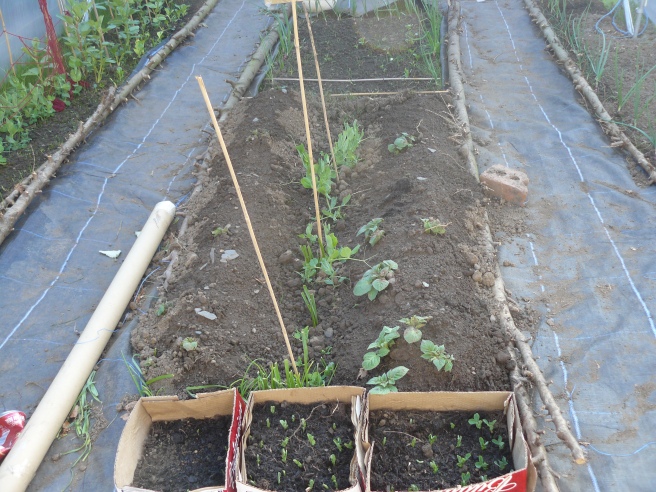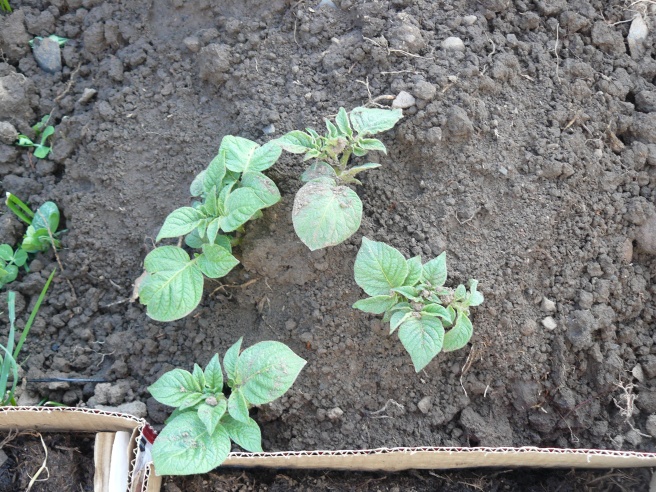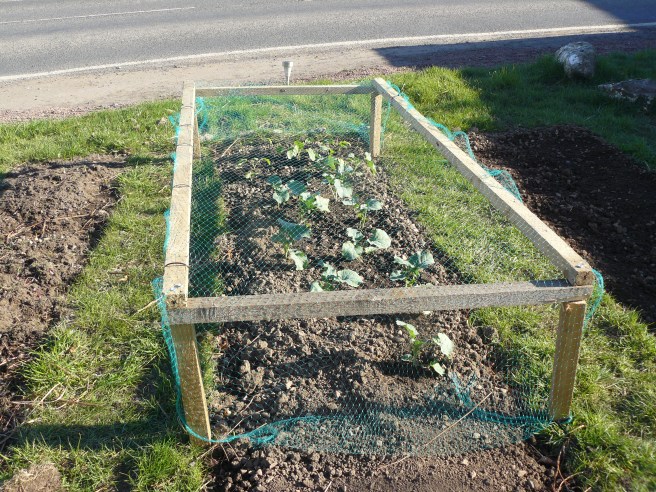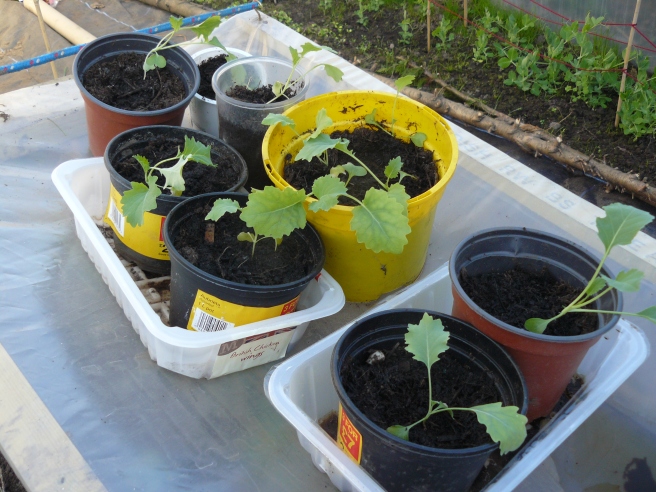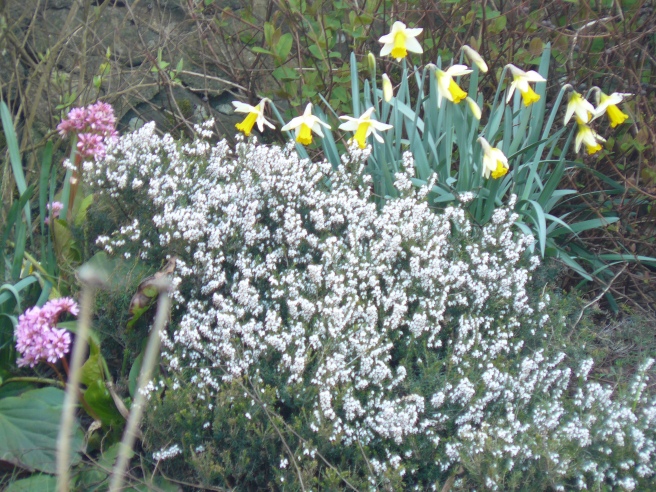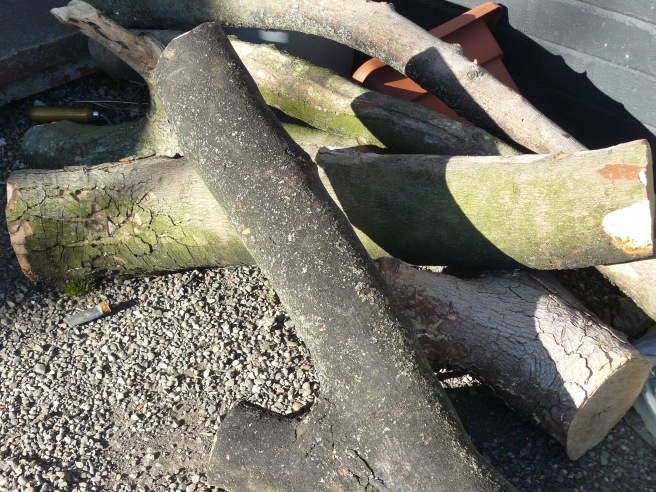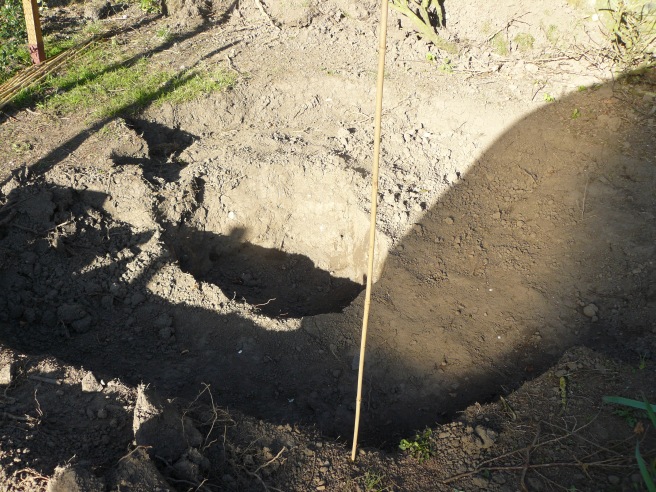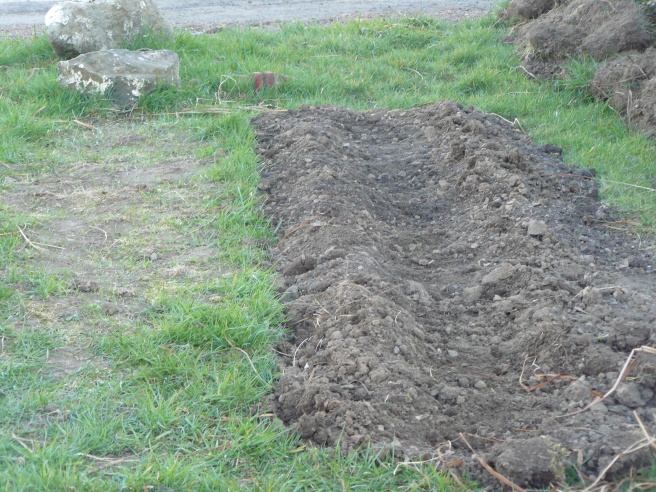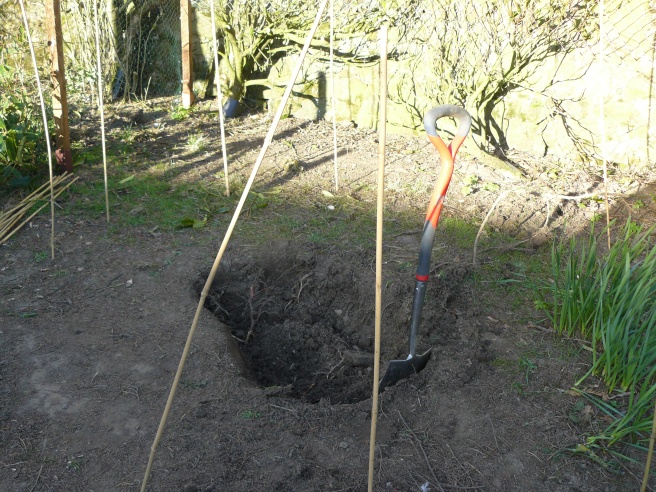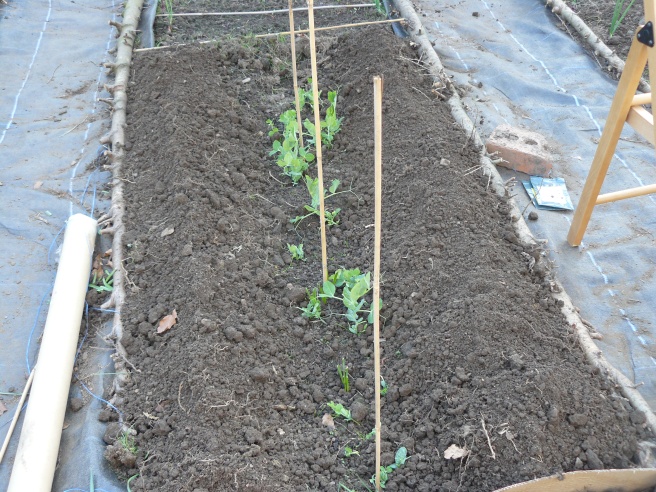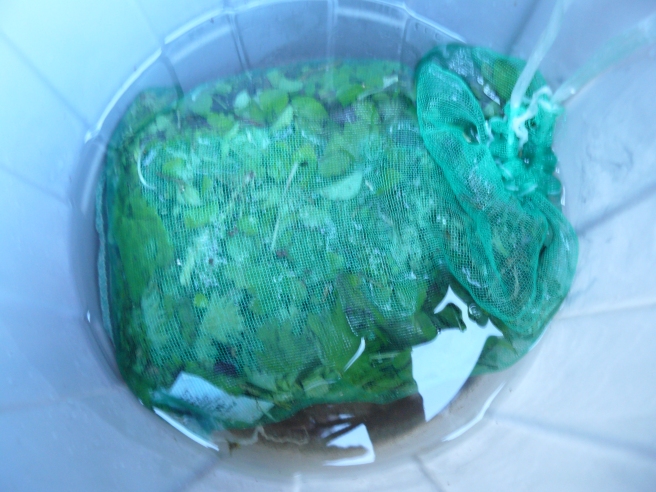It really has been a busy summer, which is why I have not updated this blog until now. There is always plenty to do around here, what with the polytunnel and vegetable beds, the orchard/forest garden, the (now 15) ex-battery hens, our dogs, and our conversion of our old stone steading building. Then there is the small matter of my full-time job as a writer! When I am writing all day Mon-Fri I do not always have the energy or inclination to write for fun. That said, I do want to keep some record of what we are doing here. I am really proud of what we have achieved so far and love moving to a more sustainable way of life. Perhaps I can even inspire others to do the same…
Summer Crops:
The polytunnel and the vegetable beds have been pretty productive this year, in spite of the bad weather earlier in the year and the unpredictable summer. As I mentioned way back in the spring, I conducted a little experiment with mulches for the potatoes and without a doubt, the seaweed mulch proved most effective. The potatoes mulched with seaweed were markedly larger than those mulched with grass or earthed up. Not very scientific, of course, but enough to convince me that is the way to go for next year.
At the moment we are eating: mixed salad, radish pods, tomatoes, courgettes, summer squash, broccoli, kale, spinach, chard, French beans, runner beans, potatoes, garlic and onions. There are peas, broad beans and runner beans in the freezer.
At the moment the only problem really is that the chilli peppers are in flower still and only the first few fruits are beginning to form, so I am not sure we will get any before the colder weather arrives. (Probably because the summer has been rather a cool one on the whole.) Perhaps I will bring them indoors from the polytunnel for the winter to see if I can get them to fruit properly.
Orchard/Forest Garden:
In addition to the crops from the vegetable beds and polytunnel, we have also enjoyed a variety of fruits from the orchard/ evolving forest garden.
We enjoyed strawberries, gooseberries, black currants, red currants, mahonia berries, and wild and cultivated raspberries over the summer and have some raspberries in the freezer for later. At the weekend we harvested the dessert apples from one of the trees in the orchard (variety unknown). They are delicious (though tart) eating apples.

Some I have wrapped for storage and I started to preserve some of the blemished fruits over the weekend. We now have jars of windfall apple jam, foraged blackberry and apple jam, pickled apple slices (with apple cider vinegar and dill seeds from the garden), several jars of apple pie mix and some dehydrated apple crisps. There are still quite a few apples left from that one tree, some of which we will be juicing over the next week or so.
There are also still lots of apples to come (mostly cooking apples, from four more trees), and two plum trees heavily laden with fruit that is very late to ripen and which I hope will ripen before the weather grows too cold.
Chickens:
We have rescued five more ex-battery hens and though, sadly, two have died suddenly over the last year, we now have a flock of 15. Unfortunately we are currently tackling a red mite outbreak but other than that they seem to be doing quite well. The white chickens (the first we got) are no longer laying but are enjoying a pleasant retirement in the orchard and of course are still contributing to the compost and the garden. The latest hens are still rather timid but integrating both lots of new hens has gone relatively smoothly. Of course we are enjoying plenty of eggs from the younger hens.

Steading Conversion:
After a year of red tape we finally have the planning consent and the building warrant and have been allowed to begin work on the conversion of the stone-built outbuilding that will be a forever home for me and my husband. It was a long and frustrating process getting all the paperwork in place. The work will take us a long time because we are doing most of it ourselves but at least things are now moving! So far we have gutted the interior, removed some wiring, propped the existing floor joists and removed a very thick stone wall to open up the space that will be our kitchen/dining room. We have also removed most of the stones (a mammoth task!) as we will be reusing them elsewhere in the conversion project. There is just some rubble and a few more large rocks to move which we will be doing at the weekend. Then we can put in the structural beam specified by the structural engineer and remove the props.



It is a slow and steady process but it feels great to have started properly at last.
I’ll try to update more regularly over the coming months!




